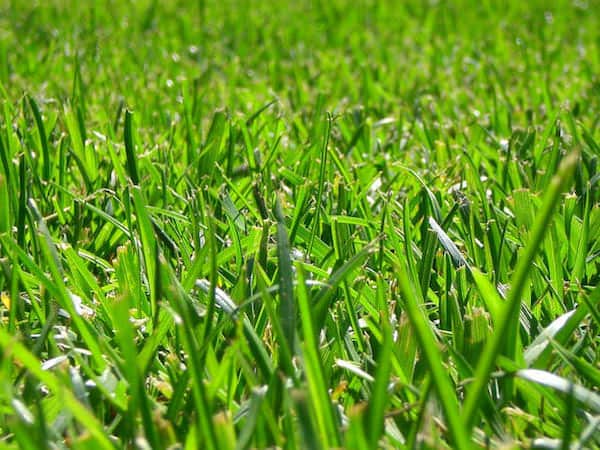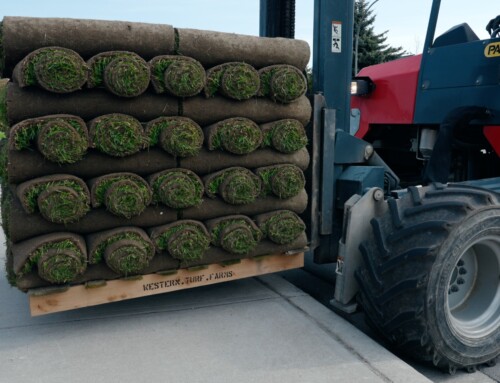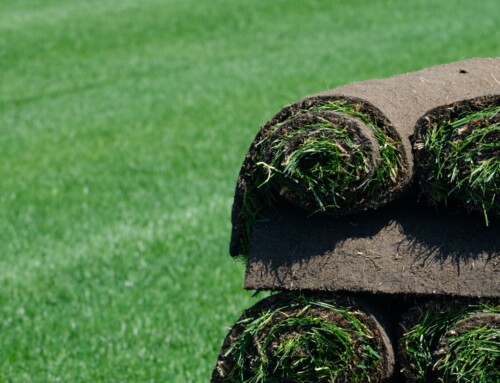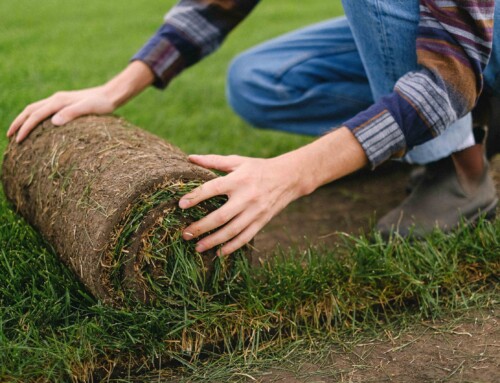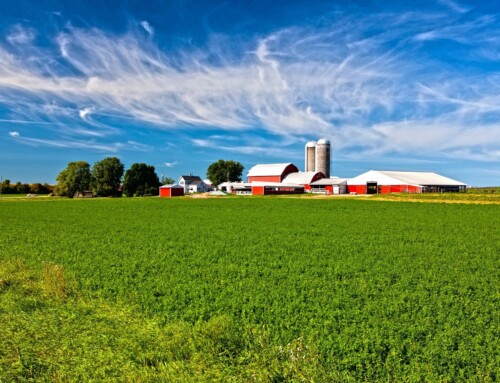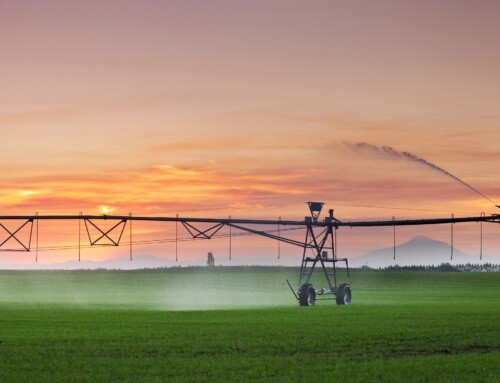Installing a Turf Lawn vs. Seeding Grass. What You Need to Know
When new customers approach our turf farm for a quote and questions about service, they’re often coming from a position of experience: they’ve previously opted to seed a lawn and are unhappy with their results.
Our homeowner customers want a lush, green lawn that gives their property curb-appeal. Commercial building owners also don’t want to take a chance that a seeded lawn turns patchy, potentially turning a landmark, architecturally-impressive multi-million dollar property into an eyesore.
When deciding to use an installed grass turf or use seed, we find one of the biggest considerations is time: having a lush, green lawn in just 2 weeks instead of two months or more is a big deciding factor for most people, as many of our customers and landscaping partners can attest. Lawns that use our turf can also be used for light recreation virtually from the start – while seeded lawns that are still growing out months later can still have “Keep off the grass” signs featuring prominently.
Beyond the time involved, the difference between the high-quality instant turf that Western Turf Farms ships and seeded lawns that can take months to show well is stark.
Maintenance During Installation for Turf Grass vs. Seeding a Lawn
Compare the two scenarios of maintenance, whether you’re installing turf grass or seeding a lawn.
When you order rolls of grass sod from Western Turf Farms, the turf is already seeded, grown and maintained right up until the day that it is harvested and delivered to your property, fresh from the farm. Professional drivers deliver to the property (we also have established relationships with landscapers and installers from Vancouver Island to Alberta). Landscapers (often recommended by our company, which has developed extensive networks with landscaping professionals over more than two decades) work with make sure that lawn is laid down properly.
Sowing grass seed also requires some preparation. The homeowner or landscaper must prepare the ground by digging, raking and taking out weeds, rocks and other obstructions. Spreading the seed takes meticulous attention to detail that even the most seasoned landscaper will find challenging. It is easy for a maintenance person to lose track of where they’ve seeded for a moment – leading to a patchy lawn when it grows in.
Hydroseeding is not a solution. There is a perception that hydro seeding (spraying on a mix of seed, water and organic growth mixture) takes out the hard physical challenge of laying down seed evenly, as you can cover even a large lawn relatively quickly. In practice, it does not prevent errors (and resulting patches) any more than in a manual process. Hydroseeding was developed as an erosion-control method for seeding grass on a sloped area that might otherwise look uneven compared to the surrounding grass turf. It was never intended as a method for spraying typical residential lawns.
As one of our professionals put it recently, “seeding is a challenge that’s not best left to the amateur. People think that they just put some seed down, water it and it’s easy. It’s actually technically challenging – to the point that we have trained professionals seeding on our farm, using GPS technology to level the ground and other specialized equipment to ensure it’s done right – before it ever arrives at a customer’s home.”
Long-Term Maintenance for Installed Grass Turf vs. Seeded Lawns
Whether a homeowner installs a lawn or seeded raw roto-tilled turf, the maintenance program really begins at this point. Even with the best of intentions, most home owners will not be able to keep up with the maintenance requirements of a seeded lawn as compared with what is needed for an installed turf lawn.
We consulted with one of our longtime landscaping partners, Nick at English Lawns, to help our customers understand what maintenance is required. “Installed turf gets you instant gratification without as much work,” he says. “With turf, you’ll need to water the lawn perhaps 2 or 3 times a day for 2 weeks. For seeding, you may be looking at 6 weeks of watering, 5 times a day – and with a seeded lawn, it needs to be just right. You don’t want to flood it. Just enough to keep it moist.”
This can prove to be a challenge on the wet west coast, where many of our home owner clients reside. It’s not uncommon in the Vancouver area, effectively built in a primeval rainforest, to experience several days of rain. “A torrential rain could actually wash the seed away,” Nick notes. “If there’s any slope at all on the lawn, all of the seed could end up in your garden.”
Some landscapers do prefer seeded lawns for cost reasons in areas with plenty of shade and tree cover, where it is hard to grow turf in any event – but again, the maintenance is an issue. “Time is money. If you’ve got to spend a lot of time babysitting your lawn, it’s better to use sod.”
Long Term Maintenance for Turf Grass vs. Seeded Lawns
As your turf lawn takes hold, you’ll need to water, mow and fertilize as normal to keep it looking its best. Even in this phase, installed turf shows better. We use hardy grasses that stand up to natural predators. Thanks to our turf’s protective mesh, it will be relatively easy to protect it against weeds, birds and insects that can cause significant damage to a seeded lawn. Indeed, seeded lawns may require extreme measures, such as netting and noise makers to keep the birds at bay – which may irritate neighbours as much as the winged wildlife.
Even with all of the extra maintenance, you won’t know if your seeded lawn looks good until it comes in. In many cases, homeowners may find themselves dealing with dry, brown patches and annoying weeds, which can require even more hands-on work by the owner (or a paid professional landscaper).
With an Instant Turf Lawn, You Get What You Pay For
The #1 reason that folks ever end up seeding their lawn instead of just installing the rolls of turf is price – or at least, their idea of what the price will be. Seeding looks cheaper – but as we’ve seen, the long term cost can be higher than expected and the owner will not know the true value of what they’ve got until the grass comes in.
Buy turf grass to install an instant, beautiful lawn, or seed the lawn yourself and pray it comes up looking nice? There’s really only one smart choice.

